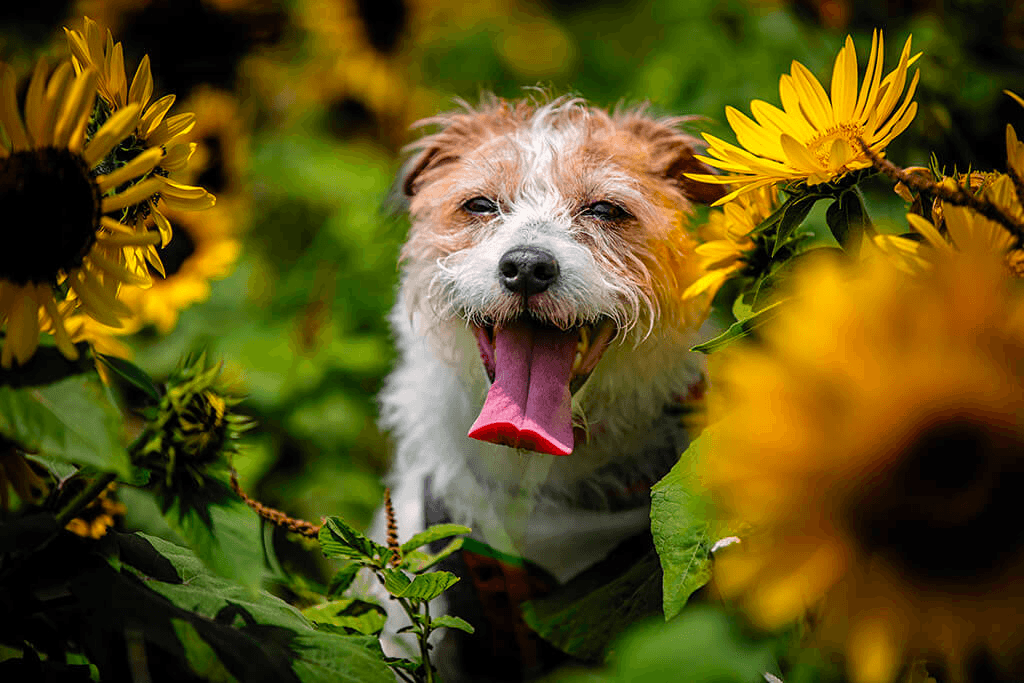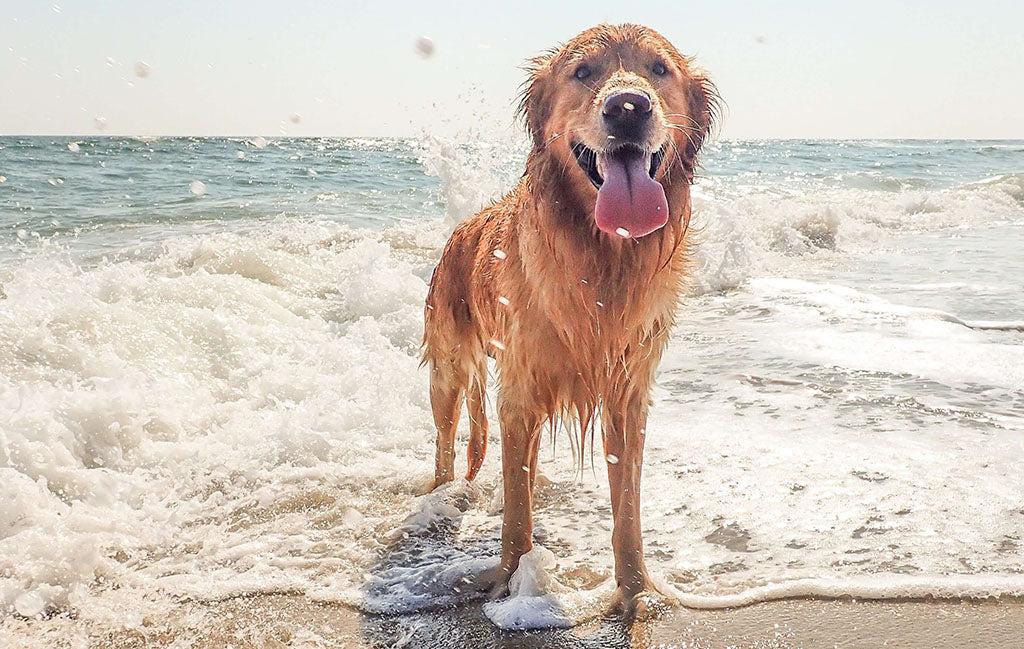Should you be concerned if your dog is vomiting clear liquid? A vet explains why this happens and what you should do about it.
- Home/
- Dog/
- Health & Wellness/
- Why Is My Dog Throwing Up Clear Liquid? A Vet Explains
Why Is My Dog Throwing Up Clear Liquid? A Vet Explains

If you’ve ever seen your dog throwing up clear liquid, it can be alarming, especially if you’re unsure of the cause. As a veterinarian, I often get asked about the different types of dog vomit and what they could mean for a pet’s health.
Vomiting is one of the most common reasons pet parents seek veterinary care, and while it can be scary, understanding the causes can help you determine the best course of action for your furry friend.
Clear Dog Vomit: What It Typically Looks Like
When we talk about “clear” vomit, we’re referring to a liquid that looks like water. This liquid may vary in appearance — it might be completely clear, slightly frothy, or have a slimy texture. Sometimes, clear dog vomit may contain a small amount of foam or have a light yellow tint, which is usually due to stomach acid.
The amount of vomit can also vary. It might be just a small puddle of clear liquid, or it could be more significant, soaking a larger area.
The sight of your dog vomiting clear liquid can be confusing. Is this a sign of something serious, or is it just a minor issue? The answer depends on several factors, including the frequency and accompanying symptoms. Let’s dive into some common reasons why your dog might be throwing up clear liquid.
Why Is My Dog Throwing Up Clear Liquid? 10 Possible Reasons
Empty Stomach
One of the most common reasons for a dog to throw up clear liquid is having an empty stomach. This type of vomiting often happens in the early morning or late at night when a dog’s stomach is empty, and it has gone several hours without eating. The clear liquid you see is usually gastric juice, which is produced by the stomach. It can be mixed with a bit of stomach acid, commonly mistaken for bile, leading to a slight yellowish tint.
Drinking Water Too Quickly
Dogs, especially those that are very active or excited, might drink water too quickly. When this happens, their stomachs can become overly full, leading to regurgitation of clear liquid. This regurgitation often occurs soon after drinking and is the body’s way of relieving the stomach from the sudden influx of fluid.
General Indigestion
Sometimes, a dog may vomit clear liquid due to simple indigestion. Just like humans, dogs can experience gastrointestinal discomfort from eating something that doesn’t agree with them or from eating too quickly. This type of vomiting is typically sporadic and resolves on its own without further issues.
Toxicity
Vomiting, including the expulsion of clear liquid, can be a sign that your dog has ingested something toxic. Toxicity can result from ingesting plants, chemicals, or human foods that are harmful to dogs. In such cases, vomiting is often accompanied by other symptoms like lethargy, drooling, or even seizures, and immediate veterinary attention is required.

Infectious Diseases
Certain infectious diseases, such as parvovirus or even kennel cough, can cause dogs to vomit clear liquid. These diseases often come with other symptoms like diarrhea, coughing, fever, or lethargy. Vomiting in these cases is usually a sign that the body is fighting off the infection, and veterinary care is crucial to managing the condition.
Gastrointestinal Obstruction
If a dog swallows a foreign object that becomes lodged in the digestive tract, it can cause a gastrointestinal obstruction. Vomiting clear liquid might occur as the dog’s body attempts to move the obstruction, but fails to do so. This situation can quickly become serious, especially if accompanied by signs such as bloating, severe abdominal pain, or an inability to keep down any food or water.
Bloat (Gastric Dilatation-Volvulus)
Bloat, also known as gastric dilatation-volvulus (GDV), is a life-threatening condition where a dog’s stomach fills with gas and twists upon itself. This can trap gas and fluids in the stomach, causing extreme distension. One of the signs of bloat is a dog attempting to vomit but only bringing up clear liquid or foam. Bloat is an emergency situation that requires immediate veterinary intervention to save the dog’s life.
Pancreatitis
Pancreatitis, or inflammation of the pancreas, is another potential cause of vomiting in dogs. This condition is often associated with the consumption of fatty foods and can lead to repeated bouts of vomiting, including clear liquid. Dogs with pancreatitis may also display signs of abdominal pain, loss of appetite, and lethargy.
Acid Reflux
Dogs can suffer from acid reflux just like humans. When this occurs, stomach acid can irritate the esophagus, leading to the vomiting of clear, frothy liquid. Acid reflux is more common in dogs with specific health issues, such as those who are overweight or who have been fed a diet that is too rich or fatty.
Parasites
Having an intestinal parasitic infection can cause inflammation and irritation of the gastrointestinal tract, including the stomach. Inflammation of the stomach can result in vomiting which may be clear especially if the stomach is empty. Dogs with a parasite burden will usually also have diarrhea, abdominal bloating, and a dull, flakey coat but vomiting can be the first and only symptom.
When to See a Vet About Clear Dog Vomit
While an occasional instance of vomiting clear liquid may not be a cause for alarm, there are situations when you should definitely seek veterinary care. If your dog is throwing up clear liquid multiple times, this could indicate an underlying issue that requires professional evaluation.
Here are some signs that it’s time to visit the vet:
- Frequency: If your dog is vomiting clear liquid multiple times in a short period, it’s essential to have them checked out. Persistent vomiting can lead to dehydration and could signal a more serious condition.
- Other Symptoms: If vomiting is accompanied by diarrhea, lethargy, loss of appetite, or signs of pain (such as whining, pacing, or a hunched posture), it’s crucial to seek veterinary attention.
- Blood or Foreign Objects: If the vomit contains blood or pieces of a foreign object, you should consider it an emergency and get your dog to a vet immediately.
- Changes in Behavior: Any significant change in your dog’s behavior, such as being unusually quiet, hiding, or showing signs of discomfort, should prompt a veterinary visit.
Vomiting clear liquid can sometimes be a sign of a life-threatening emergency, such as bloat (gastric dilatation-volvulus) or an intestinal obstruction. These conditions require immediate intervention, and time is of the essence.
Prevention Tips
Preventing your dog from vomiting clear liquid often involves addressing the underlying causes. Here are some tips to help reduce the chances of your dog experiencing this issue:
Feed Smaller, More Frequent Meals: If your dog tends to vomit due to an empty stomach, try feeding smaller, more frequent meals throughout the day. This can help keep their stomach from getting too empty, reducing the likelihood of vomiting.
Slow Down Drinking: If your dog drinks water too quickly, consider using a water dispenser designed to slow them down or offering water in smaller amounts at a time.
Avoid Toxins: Keep all potential toxins, including household cleaners, certain plants, and human foods, out of reach. Always supervise your dog when they are outdoors to prevent them from eating something they shouldn’t.
Monitor Eating Habits: If your dog tends to eat quickly, you can try using a slow feeder bowl, which encourages slower eating and reduces the risk of indigestion and vomiting.
Regular Vet Check-Ups: Routine veterinary visits can help catch potential health issues before they become serious. Your vet can offer personalized advice based on your dog’s health and lifestyle.
Conclusion
Seeing your dog throw up clear liquid can be worrying, but it’s not always a sign of something serious. By understanding the potential causes and knowing when to seek veterinary care, you can ensure that your dog stays healthy and happy.
Remember, if you’re ever in doubt, it’s always best to consult with your veterinarian. Vets like me are here to help you navigate these situations and provide the best care for your beloved pet.
 S
S



